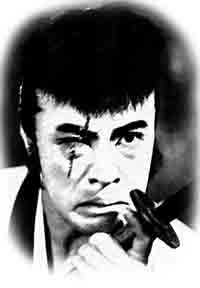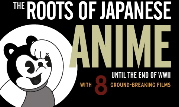I just made a quick trip to the United States - four days and three nights - to attend a quite stimulating conference entitled Relocating Ozu: The Question of an Asian Cinema Aesthetic at the University of California, Berkeley.
The usual ways to explore such a question would consider how Ozu's cinema manifested some basic Asian aesthetic principles, or how he was the source or the subject of Asian cinematic influences. The problem with the former method is that in the past it has tended to either be subject to Orientalist fantasies or, especially in the case of Japanese pan-Asianism, conceal an inherent nationalism in which Japan claims to best manifest Asian values or that it is meant to lead a united Asia. The latter method is difficult, first practically because it is hard to determine when and where Ozu might have seen many other Asian films (a rather unlikely possibility) or how much Asian directors might have seen Ozu (a more likely prospect but still hard to pin down); and second theoretically because even showing the fact of contact or of similarities is not enough to prove the cause and effect narrative of influence.
The very fact that this conference on a Japanese film director was initiated by the Center for Chinese Studies, however, signaled that things would be different and that the question of Ozu in Asia would be subject to not only more stringent evaluation but also to more complex refraction and mediation.
There were attempts to map out possible routes of influence and common principles, but this time seen through more precise lenses. Jinsoo An, for instance, laid the foundation for considering Ozu's influence on Korean cinema by reviewing the role the Asia Film Festival and the Pusan Film Festival played in presenting Japanese film in postcolonial Korea at a time when it was officially banned. Jason McGrath took on the daunting task of evaluating the possibility of an Asian cinematic aesthetic by considering the commonalities between so-called traditional principles and modernist questions.
A number also tried to lay the groundwork for "relocating" Ozu by loosening his ties to Japanese soil. David Desser questioned perceptions that tended to downplay such "frivolous" films as Ohayo , and Daisuke Miyao focused on the dark urban lighting in That Night's Wife to argue not only Ozu's ambivalent relation to Japanese specular modernity, but also his resonances with German cinema. Michael Raine put forward the notion of "transcultural mimesis" to claim Ozu's strong relation to Hollywood film in the way he recreated, parodied, learned from, and mastered that cinema while still remaining aware of the inequalities between Japan and the USA. And Kirsten Cather considered whether Suo Masayuki's "Ozu-as-pink-film" work Abnormal Family can help us see Ozu in a new light.
, and Daisuke Miyao focused on the dark urban lighting in That Night's Wife to argue not only Ozu's ambivalent relation to Japanese specular modernity, but also his resonances with German cinema. Michael Raine put forward the notion of "transcultural mimesis" to claim Ozu's strong relation to Hollywood film in the way he recreated, parodied, learned from, and mastered that cinema while still remaining aware of the inequalities between Japan and the USA. And Kirsten Cather considered whether Suo Masayuki's "Ozu-as-pink-film" work Abnormal Family can help us see Ozu in a new light.
Many of the participants did try to link Ozu to other Asian films and filmmakers, but less directly than through common grounds and common "others" such as Hollywood. Xinyu Dong, for instance, linked Ozu and Zhu Shilin by considering how their varied appropriations of the "Lubitsch touch" complicated their wartime films. Jinhee Choi related Ozu to Korean directors such as Shin Sang-ok and Lee Bong-rae by considered the parallels between the "shoshimin" and the "sosimin" genres and their visions of the salaryman father.
For several papers, Hou Hsiao-hsien was the preferred object of linkage (the conference encouraged this by showing his City of Sadness). James Udden made it clear that such links are problematic given the stylistic differences between Ozu and Hou, even though he tried to find ways of joining them in "spirit." My paper considered less how Ozu influenced Hou than how an image of Ozu, one created by the influential Japanese film critic Hasumi Shigehiko, could connect with Hou in the way Hasumi's vision of what cinema is - one shaped by his encounter with Ozu - determined how he introduced Hou to Japan. Guo-Juin Hong tried to align Hou with Ozu by using David Bordwell's notion of a cinematic poetics to consider the historical formation of Hou's cinema. And Chika Kinoshita, without needing any claims about influence or direct adaptation, made much of the remarkable parallels between Cafe Lumiere and Tokyo Twilight
and Tokyo Twilight as "pregnancy films."
as "pregnancy films."
The range of methods - even the mobile range of perspectives - could not help but make me think that there was not some kind of parallel between the way we were looking at Ozu and the "cruising" spectators in Tsai Ming-liang's Goodbye, Dragon Inn , which Dan O'Neill discussed in the last paper as promoting an "aesthetics of slowness" that could connect with Ozu as well.
, which Dan O'Neill discussed in the last paper as promoting an "aesthetics of slowness" that could connect with Ozu as well.
It all reminded me of how rich Ozu's cinema is to sustain such varied approaches, as well as how complicated Ozu's connections are to such polysemic terms as "Japan," "Asia," and "modernity." I hope to see more of such conferences in the future. Thanks to Andrew Jones, Alan Tansman, and all the others who made this a reality.


